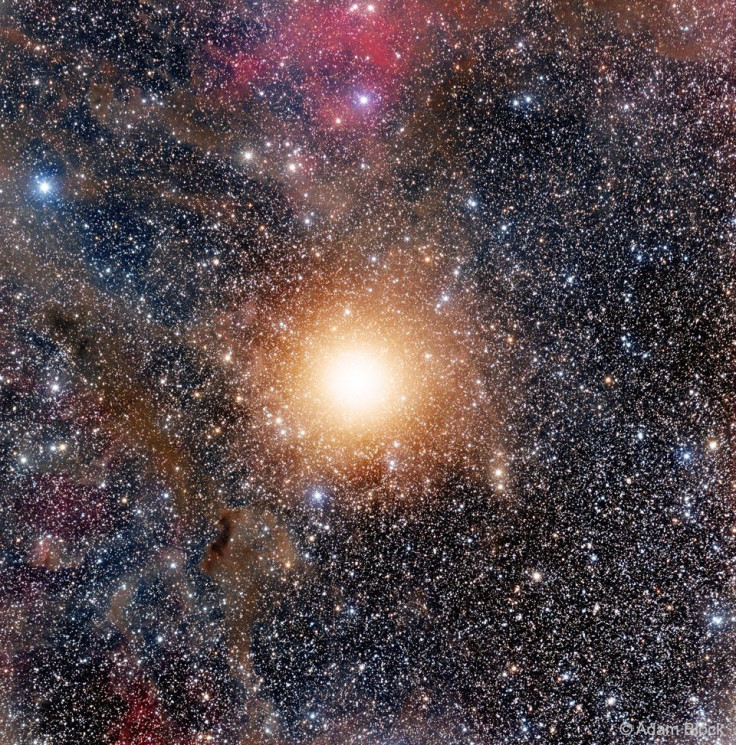'Betelgeuse On Steroids': This Monster Star Is Dimming And Scientists Now Know Why
KEY POINTS
- The hypergiant VY Canis Major is no longer visible to the naked eye
- Researchers used Hubble images to determine the cause of the dimming
- It's quite similar to Betelgeuse's dimming
Scientists have figured out why a monster star in the constellation Canis Major (the Great Dog) has been dimming.
The red hypergiant VY Canis Majoris is so massive it would engulf the inner planets and extend out to between Jupiter and Saturn if it replaced the sun at the center of our solar system, the European Space Agency (ESA) said.
But even though it is so bright and massive, the "monster" hypergiant is so far away that even 200 years ago, it was only visible as a faint star. And eventually, the star dimmed until it was no longer visible to the naked eye.
So what is it that caused this massive star to dim?
"Betelgeuse On Steroids"
Scientists used NASA/ESA's Hubble Space Telescope to have a closer look at the hypergiant and found that it was dimming because the star was ejecting material into space, briefly obstructing its brightness from our view, NASA explained in a news release.
Scientists last year observed a similar phenomenon in the star Betelgeuse, which lies in the constellation Orion.

"The similarity of this correspondence in VY CMa with the remarkable recent dimming of Betelgeuse and an outflow of gas is apparent," the scientists wrote in their paper, published in The Astronomical Journal.
"VY Canis Majoris is behaving a lot like Betelgeuse on steroids," study lead Roberta Humphreys, of the University of Minnesota, Minneapolis, said in the NASA news release.
Violent stellar outbursts
Betelgeuse is quite massive as a supergiant star, but VY Canis Majoris is even "more massive" and its outbursts are "more violent," NASA said. Compared to Betelgeuse's dimming, which lasted for weeks, the phenomenon could last for years in VY Canis Majoris.
The researchers were also able to date the "close-in knots" of hot gas ejected by VY Canis Majoris, and many of them were associated with several dimming episodes in the 19th and 20th centuries, NASA said.
Some of these knots were even twice the mass of Jupiter, the agency said.
In an image shared by ESA/Hubble, one can see three panels of images, all of which show VY Canis Majoris. The left-most and center panels show Hubble images of the nebula shed by the hypergiant, with the center panel showing a more close-up view. The right-most panel is an illustration of VY Canis Majoris' violent ejections, according to the ESA.
Hubble solved the mystery of a monster star's dimming: VY Canis Majoris is expelling huge clouds of dust in the final stages of its life.
— HUBBLE (@HUBBLE_space) March 4, 2021
🔗 https://t.co/G7XzugsgSE
Credit: @NASA / @ESA , and R. Humphreys ( @umnews ), & J. Olmsted ( @stsci ) pic.twitter.com/oA5LWzry34
A special red hypergiant
Humphreys says this provides evidence that such ejections may be more common in red supergiants than previously thought, and that the activity may even be a driver for mysterious mass loss in red giants.
However, she noted that VY Canis Majoris is also quite unique.
"So what's special about it? VY Canis Majoris may be in a unique evolutionary state that separates it from the other stars," she said, explaining that it is a second-stage red supergiant. "It's probably this active over a very short period, maybe only a few thousand years. We're not going to see many of those around."
VY Canis Majoris is already in the later stages of its life. And it's possible that it could collapse into a black hole instead of exploding as a supernova, NASA said.

© Copyright IBTimes 2025. All rights reserved.





















